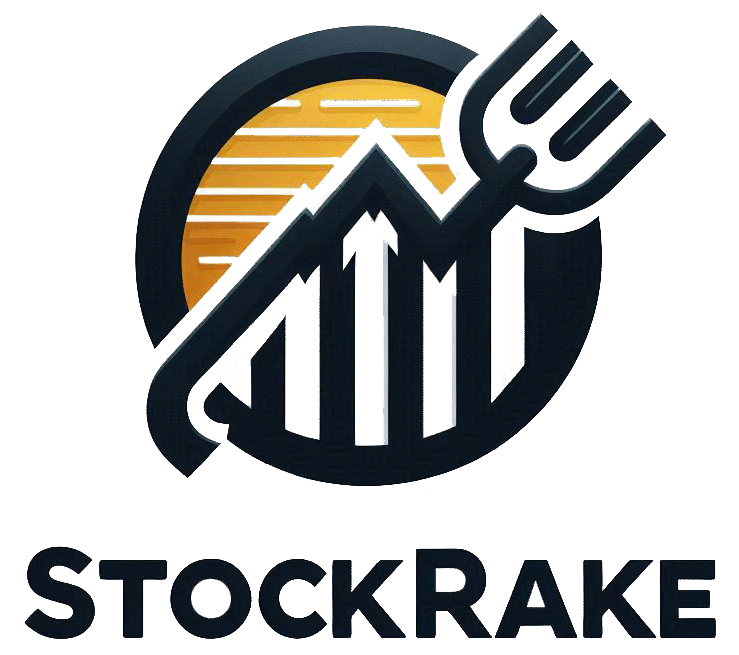Picture this: it’s a Tuesday morning, sun’s out, birds are doing their thing, and you’re… still in bed. Not because you overslept or skipped work. You just… don’t have to go anywhere. No boss waiting, no timecard, no “urgent” email that isn’t actually urgent.
You wake up when your body decides it’s ready.
You make coffee because you want to, not because it’s the only thing keeping you functioning.
That’s basically the core fantasy behind FIRE — Financial Independence, Retire Early. It’s people saying, “You know what? Maybe I don’t want to spend 40 years in the office just to enjoy 10 years of retirement when my knees hurt.”
FIRE isn’t about hating your job (though, let’s be honest, sometimes that’s part of it). It’s about wanting freedom and flexibility and a life where money isn’t the giant stressful monster sitting on your shoulder every day.
What Does Financial Independence Mean?
Financial independence basically means your money makes the money you need to live. You’re not trading hours for a paycheck anymore — the returns on your investments show up quietly in the background and pay your bills for you.

It’s weirdly simple:
Your passive income ≥ Your living expenses.
At that point, you’re free. Whether you want to retire at 40 or keep doing something meaningful (or even something pointless but fun), you get to choose.
What Is FIRE
Common Sources of Passive Income
- dividends from stocks / mutual funds
- rental income
- business or royalty income
- interest from bonds or fixed deposits
Once these beat your expenses, congrats — you’re financially independent.
Example:
If you spend ₹70,000 a month (₹8.4 lakh a year), you’d need roughly ₹2.1 crore invested following the 4% rule.
(8.4 lakh × 25)
And yes, it looks like a big number at first. But that’s how long-term compounding works — slow at the start, crazy at the end.

Also Read: What Are the Best Trading Hours for Volatility?
💰 How People Work Towards FIRE
FIRE isn’t the result of a lucky stock pick or some relative leaving you 10 acres of land. It’s mostly habits — boring ones, honestly — repeated for years.
What Is FIRE
1. Aggressive Saving
People into FIRE tend to save… a lot. Like 40–60% of their income. And no, they’re not living on instant noodles or skipping social life. They just don’t spend money on things they genuinely don’t care about.

They avoid lifestyle inflation — that sneaky thing where your income rises and magically your expenses rise too.
2. Consistent Investing
Most FIRE folks aren’t day-trading or trying to predict the next “to the moon” stock. They put money in:
- index funds
- equity mutual funds
- ETFs
…and then they leave it alone for years, letting compounding work its slow magic.
3. Tracking Every Rupee
You can’t optimize what you don’t measure.
It’s not about micromanaging — it’s just about knowing where your money drips out.
A ₹200 leak here and a ₹500 leak there adds up faster than people realize.
4. Setting a Retirement Target
Your FIRE number gives you something to aim at instead of doing guesswork. That’s why the 25x rule is popular: just multiply your annual expenses by 25.
Simple, a bit old-school, but surprisingly effective.
🌟 Why FIRE Appeals to So Many People
At the heart of it, FIRE is about choice. Time freedom. The luxury of saying “no” without your bank balance threatening you.

What Is FIRE
Why do people love the idea?
- you can work if you want, not because you have to
- your stress levels drop dramatically
- you can pursue projects that don’t necessarily pay well (or at all)
- you stop living paycheck-to-paycheck and start living intentionally
It’s not a coincidence that millennials and Gen Z are picking this up more than older generations — watching your parents grind endlessly is a decent motivator to not want that future.
🔀 Different Paths to FIRE
Not everybody wants the same version of “early retirement”. So the FIRE community split into different flavors, depending on lifestyle.
| Type | Description | Best For |
|---|---|---|
| Lean FIRE | very frugal, minimalist lifestyle | people with modest incomes or simple tastes |
| Fat FIRE | comfortable, higher-end lifestyle | high earners who don’t want to “cut back” |
| Barista FIRE | semi-retirement + part-time gig | those who want balance |
Real-World Example:
- A software engineer going for Fat FIRE might aim for ₹5 crore and retire early with a comfortable lifestyle.
- A teacher who enjoys minimalism may need only around ₹1.5 crore for Lean FIRE.
Different incomes, different dreams, same idea.

Also Read: How Do Stop-Loss Orders Protect Your Trades?
🧭 Choosing the Right FIRE Strategy
Before jumping in, it helps to ask yourself a few brutally honest questions.
What Is FIRE
Stuff like:
- What lifestyle do I actually want later?
- What do I make right now and how much can I actually save?
- What’s my risk appetite? (Not the version you wish you had — the actual one.)
- How many years do I want to keep working full-time?

Once you’re clear on those, building a blueprint gets easier:
- automate SIPs
- build an emergency fund (6–12 months is the sweet spot)
- diversify (equity, debt, gold, real estate…)
No heroism required — just a system.
⚙️ Core Principles of the FIRE Framework
Think of these as the rules that keep the whole structure standing:
- High Savings Rate — aim for 40–60% when possible
- Disciplined Investing — don’t break your plan every time the news freaks you out
- Frugal Living — cut the unnecessary, not the meaningful
- Debt-Free Life — especially high-interest debt
- Goal-Based Planning — map out milestones and track yearly
Automation helps when motivation inevitably dies off some months.

Also Read: How Can You Reduce Taxes on Your Investment Gains?
📈 Investing for FIRE
Your portfolio does the heavy lifting, so you want it to be balanced but growth-oriented.

| Asset Type | Role | Examples |
|---|---|---|
| Equity Funds / ETFs | long-term growth | Nifty Index Funds, Large Caps |
| Debt Funds | stability | Corporate Bonds, Liquid Funds |
| ELSS | growth + tax benefit | Equity Linked Savings Scheme |
| Gold / REITs | diversification | SGBs, REITs |
Key Investing Tips:
- rebalance once a year
- use STPs for lump sums
- don’t chase “hot” stocks — they cool fast
What Is FIRE
Consistency beats cleverness 99% of the time.
🔢 How to Calculate Your FIRE Number
The FIRE number is your finish line — the point where work becomes optional.
Formula is easy:
Annual Expenses × 25
(aka the 4% rule)
Example:
| Annual Expenses | 4% Rule | 3.5% Rule | 3% Rule |
|---|---|---|---|
| ₹8 lakh | ₹2 crore | ₹2.29 crore | ₹2.67 crore |
| ₹12 lakh | ₹3 crore | ₹3.43 crore | ₹4 crore |
Lower withdrawal rates give you more safety if you’re extra cautious about the markets.
Also remember:
- healthcare will get pricier
- inflation never sleeps
- your lifestyle WILL evolve (usually upwards)
🌈 Life After FIRE – Sustaining Financial Freedom
A lot of people focus so hard on “getting to FIRE” that they forget there’s an actual life afterward.
You still have to manage your money — just without the job pressure.
Tips for Life After FIRE:
- stick to a 3–4% withdrawal rate
- stay invested (don’t pull everything out)
- rebalance regularly
- keep solid insurance
- have some purpose — humans go nuts without it
FIRE isn’t about quitting life. It’s about redesigning it.
⚠️ Common FIRE Mistakes to Avoid
A few pitfalls that regularly trip people:
- underestimating inflation
- ignoring health insurance (dangerous, honestly)
- taking way too much market risk
- being overly conservative (too much cash kills growth)
- lifestyle creep — it sneaks up on everyone
✅ Action Plan: How to Start Your FIRE Journey
Here’s a simple starter list:
- track your expenses
- get your FIRE number
- pay off high-interest debt
- start investing (even small SIPs matter)
- build additional income streams
- review progress yearly
Example Plan:
- Save ₹50k/month
- Invest ₹40k in equity SIPs
- Put ₹10k into emergency fund + debt payoff
Very doable for many dual-income households.
🏁 Conclusion: Your Path to Financial Freedom Starts Now
FIRE isn’t magic. It’s not a hack or a trick or a get-rich scheme. It’s just a slow, intentional process of spending less, investing more, and designing a life where your time belongs to you.
Start small. Track one thing. Make one change.
It feels tiny in the moment, but it compounds — just like your investments.
Your freedom number is out there. And you’re probably way closer to it than you think.
💬 FAQs About FIRE (Financial Independence, Retire Early)
Q1. Is FIRE realistic for middle-income earners?
Yes. Lean FIRE is very much possible with good planning and consistent investing.
Q2. What if the market crashes after I retire?
Diversification + a buffer fund + flexible withdrawals = you’re fine.
Q3. How much should I save monthly for FIRE?
Aim for 30–40% to begin with, then increase as your income grows.
Q4. What is the 4% rule?
You withdraw 4% of your total corpus every year — supposedly safe for 30+ years.
Q5. Can FIRE work in India?
Absolutely. Many Indians already hit variations of FIRE without calling it that.

